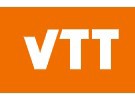Believe it or not, you can cook up a soup to have coffee powder, package it, and sell it to consumers. All you need to do is a bioreactor and a bit of cell culture.
As much as cell culture sounds like the latest human-made horror beyond anyone’s comprehension, the history of the application of this tech extends for quite a long time. “Initially, it was mostly used in pharmaceutics, like medicinal plants for pharma productions. The idea was to use individual compounds, that’s where the tech originated,” says Heiko Reischer, research team leader at VTT Research out of Finland. He and his team are currently researching a scalable and profitable way to grow coffee in cell culture.
Certainly, a great crop to draw the attention of the (large) world population of coffee addicts. “With coffee, we chose a very prominent case study as conventional coffee production has many issues,” he points out. “Because of the popularity of coffee, it’s pivotal to find a way to sustainably produce such a crop.”

A matter of size
There have been experiments with different modes of coffee production, like this coffee greenhouse, but ultimately, there’s always a challenge hiding somewhere. And on top of that, coffee consumption is quite high, so the question of scale is of crucial importance over here. “The bigger picture of this research is to make this at scale,” Heiko says. “That obviously poses many challenges, but before you get to that, you must first establish the production system. There’s an empirical process for each species or crop.” Bluntly put, you need to know in advance what you are doing. It’s not that different from ‘traditional’ horticulture, after all. “We have protocols, schemes, and regulations. Just like for farmers, we need to get a supplier of organisms, we need access to the material.”
Everything starts from a small scale, and getting to a large scale is certainly a long way. “We’d need to develop the scaling. Any project we are doing with our customers would involve a tech transfer to get to a bigger scale.” But since the research here is about novel food production, they’d also need to go through novel food regulation approval, and that is another headache on its own. “It’s costly and time-consuming before you have a marketable product. At the same time, some locations are more open to such novelties. Think of Singapore, for instance. They have more relaxed regulations, and it’s no wonder there are so many startups over there.”
Tackling conventional production issues with cells
While challenges abound, the prospect of a coffee production methodology that’s not bound to any location is one that gives hope for the future of coffee. “Industrial-scale coffee farming has its problems with pesticide run-offs, soil degradation, and the like. You can try to grow it in a vertical farm, where you can reuse the water, have a clear understanding of input costs, yet we all know the toll for that: skyrocketing electricity consumption. You can perhaps grow that in a greenhouse, but that’s remarkably similar to outdoor cultivation, and doing that at scale can be very financially intensive.”
At the same time, growing coffee in cell culture also means to consider the entirety of the coffee chain. “In the coffee world, you have a long value chain with different industries involved. Agriculture is just one end of it because then you have logistics, then someone must take care of the roasting, then of the blending, until the product is distributed. There’s rarely one player only doing that.” The product of growing coffee in cell culture is a sort of goo that, once dried, is already in powder form. So, may the coffee chain become shorter with cell culture? A little too soon to say that for sure, also according to Heiko. “It’s still too soon to make any grandiose assumption, but certainly this mode of production has a place, if not now, for the future. For instance, the younger generation has shown a lot of interest and are very curious about this type of approach.”
However, Heiko believes that one of the biggest issues will always be regulatory approval. “Nobody has done this yet. The regulatory approval can take up to 4 years, and only then can we start counting the time down. To achieve what we are trying to achieve, you need to be a visionary. The pay is not big enough yet, but cell culture will totally have a place next to conventional production modes in the future.”
For more information:
VTT Research Centre
P.O. Box 1000, FI-02044 VTT, Finland
Tel.: +358 20 722 111
Fax: +358 20 722 7001
vttresearch.com
